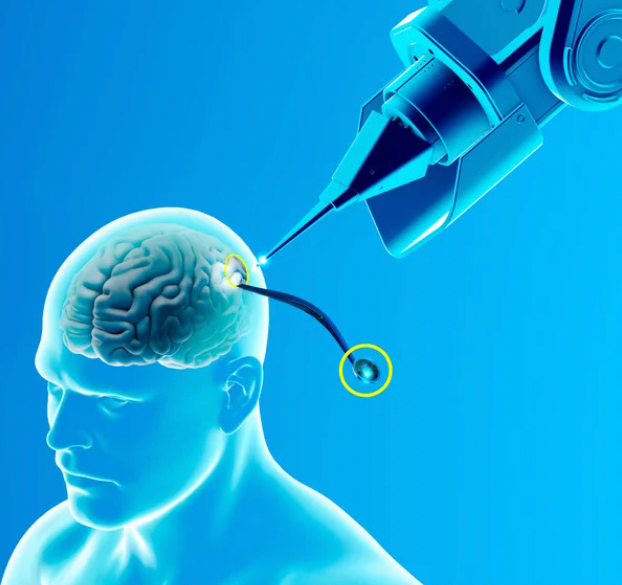By Dhristi Agarwal, SciTech Editor
SciTech investigates the prospective developments in biotechnology policy regulation, elucidating both its potential benefits and concerning risks.
The contemporary landscape of science, technology, and health is increasingly dominated by the rise of biohacking. Projections indicate that the market for human enhancement is set to reach $2.3 billion by 2025, signifying that biohacking is not merely a transient trend but rather a distinct movement. Analysing the potential of this emerging field and emphasizing the critical need for comprehensive policy regulations in this unexplored domain are of paramount importance.
The Power of Personal Autonomy: Exploring the Ethics of Biohacking
At the crux of the biohacking movement lies the idea that individuals can take control of their health and well-being by enhancing their physical and cognitive abilities. However, while celebrating personal autonomy, we must grapple with profound ethical considerations. Biohackers, in contrast to traditional biological researchers, often operate without obtaining ethical review for their work. They are typically self-funded and not held accountable to private or agency funders, setting a distinctive precedent. The question that emerges is whether absolute autonomy in modifying one's biology fosters a positive vision of human potential or ventures into the realm of hazardous excess.
The Role of Behaviour in Shaping Biohacking Policy
Leveraging principles from behavioural economics, policy analyses must study the dynamics of human behaviour within the context of biohacking technologies. By uncovering the psychological motivators like the desire for self-improvement, evolutionary desire for greater health and longevity and the fear of missing out where others are enhancing their abilities through biohacking can motivate some to participate or display their reservations regarding biohacking. Striking a delicate balance to promote innovation while safeguarding public health and safety is the primary objective.
Beyond CRISPR: Genetic Biohacking and the Pandora's Box
Genetic biohacking involves the deliberate manipulation of an individual's genetic code, and its potential applications raise complex ethical dilemmas. One of the pivotal tools in genetic editing is CRISPR, an acronym for Clustered Regularly Interspaced Short Palindromic Repeats, which operates like molecular scissors, enabling precise gene editing in living organisms. For instance, someone might seek to enhance their muscle strength or cognitive abilities by editing specific genes. However, this advancement carries the potential of creating 'designer babies,' a practice illegal in the UK but subject to varying policies in different countries. Modifying embryos risks introducing health issues that may not become apparent until later in life. Despite the ethical concerns, genetic biohacking holds the promise of eradicating devastating hereditary diseases like cystic fibrosis or sickle cell anaemia which could have a life-altering impact on affected individuals and their families.
Emerging Biohacking Technologies
Neuralink, founded by Elon Musk, represents a pioneering advancement in biohacking. Its goal is to establish a direct interface between the human brain and external devices, potentially enhancing cognitive abilities, facilitating communication with machines, and addressing neurological conditions. It may offer new treatment options for conditions like epilepsy, Parkinson's disease, or depression. the ethical and policy implications are equally substantial. Yet, Neuralink raises significant ethical questions about consent, privacy, and the potential misuse of brain data. Other biohackers are attempting to improve themselves through more traditional medical procedures. This includes utilising supplements and off-label permitted medications such as rapamycin to enhance health or cognition.

Biohacking and the Socioeconomic Divide: A Policy Dilemma
The prospect of biohacking technologies exacerbating societal inequalities must be acknowledged. The unequal distribution of access to these interventions can lead to a growing gap between the privileged and marginalized. Policies must consider the long-term effects of biohacking on individuals and future generations to prevent unforeseen health issues and societal implications.
In the context of international biohacking regulations, there is an urgent need for international collaboration to formulate comprehensive and harmonized regulations that encompass innovation, safety, and ethical principles. In 2019, entities such as the International Commission on the Clinical Use of Human Germline Genome Editing and the WHO Expert Advisory Committee on Developing Global Standards for Governance and Oversight of Human Genome Editing were established to provide recommendations and clarity in this evolving field.
Navigating the Grey Area: The Lack of International Biohacking Regulations
In the World Health Organization's framework, biohacking aligns with research ethics and the communal norms of the scientific community. Advocates propose self-governance among biohackers, led by figures like bioethicist Alex Pearlman who wants to develop a set of guidelines distinct to biohackers. There's a pressing need for a systematic risk assessment framework for biological engineering.
It can be argued that biohackers are not violating the bioethical principles as they are self-informed and autonomous. However, if they do germline editing, it holds risks and consequences for humanity that already are strongly governed by bioethical standards. Biohackers should not be exempt from well-defined principles merely because they claim to operate based on other principles.
The Role of Education and Self-Governance
Education is paramount in helping private actors understand the risks posed by certain forms of biohacking and appreciate the role of regulatory agencies like the FDA in both consumer protection and fostering innovation. Public regulators, such as the FDA, can benefit from engaging with stakeholders to better understand genetic biohacking activities and the perspectives of participants, as well as the potential for self-governance within biohacking communities.
As we navigate the emerging biohacking landscape, policymakers, and regulators, both public and private, should recognize that different genetic biohacking activities present varying risks and should be addressed with distinct approaches. Tailoring existing regulatory mechanisms to mitigate these risks while harnessing its potential.
Featured image: Pexels/https://www.pexels.com/photo/woman-pointing-finger-on-bionic-hand-6153741/
If you had the opportunity to enhance your cognitive abilities through technologies like Neuralink, how would you balance the promise of mental improvement with concerns about safeguarding your privacy?








